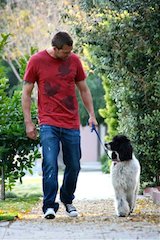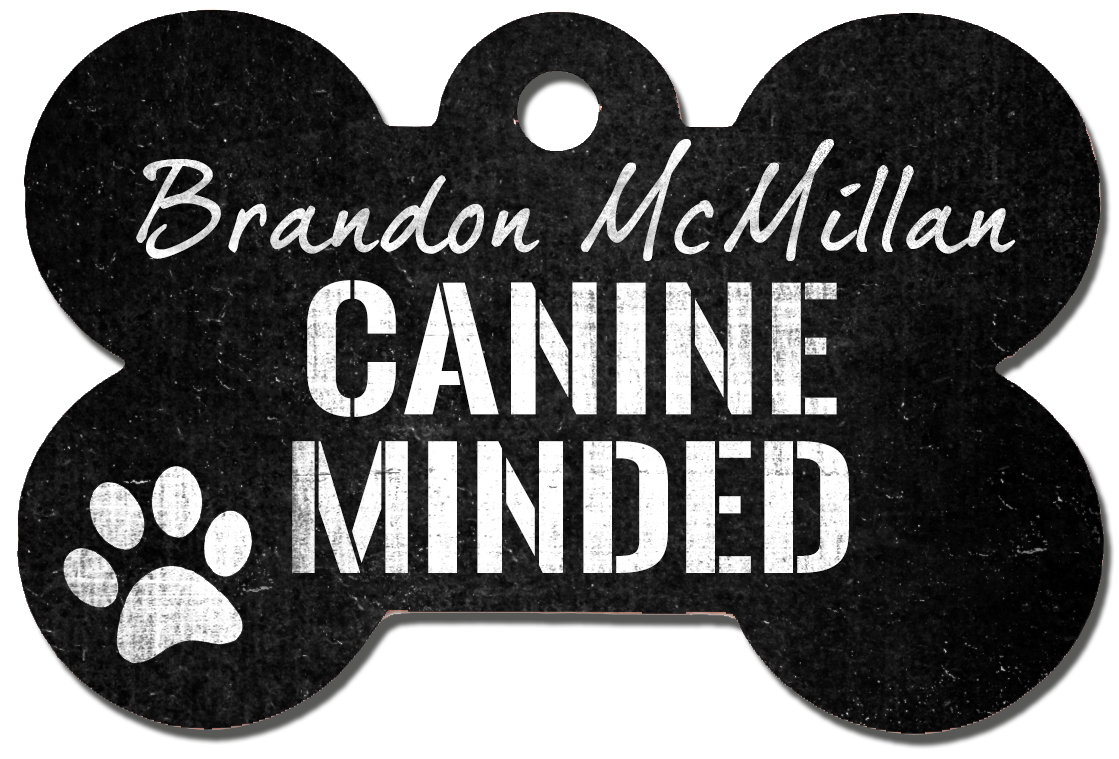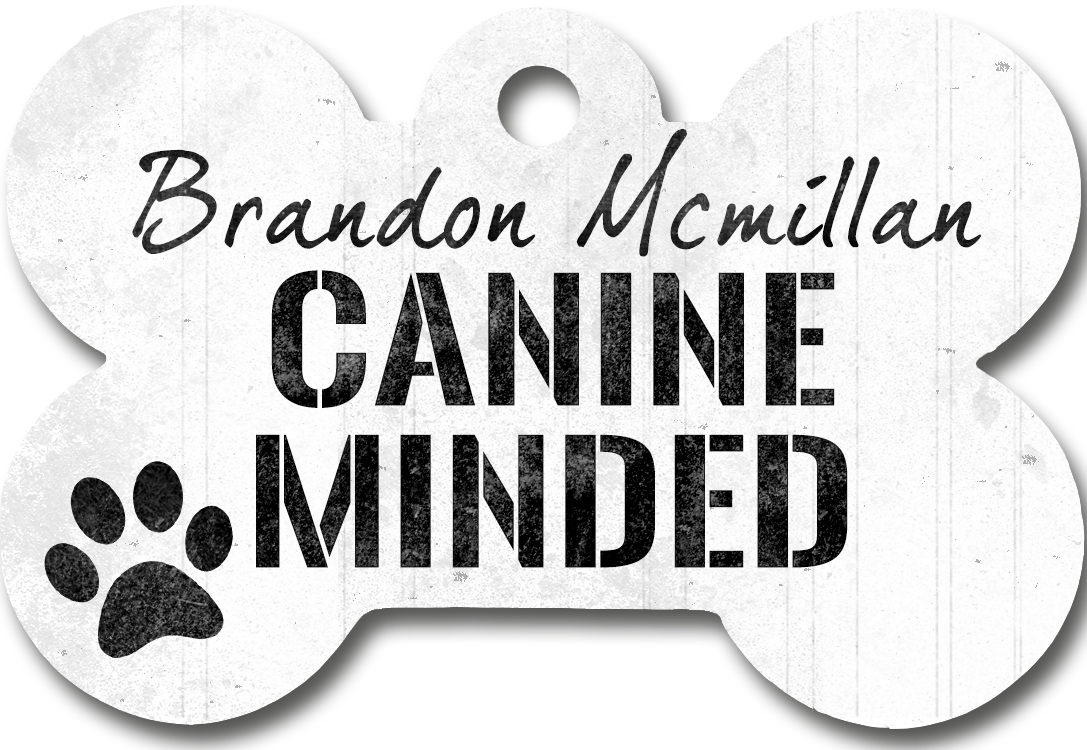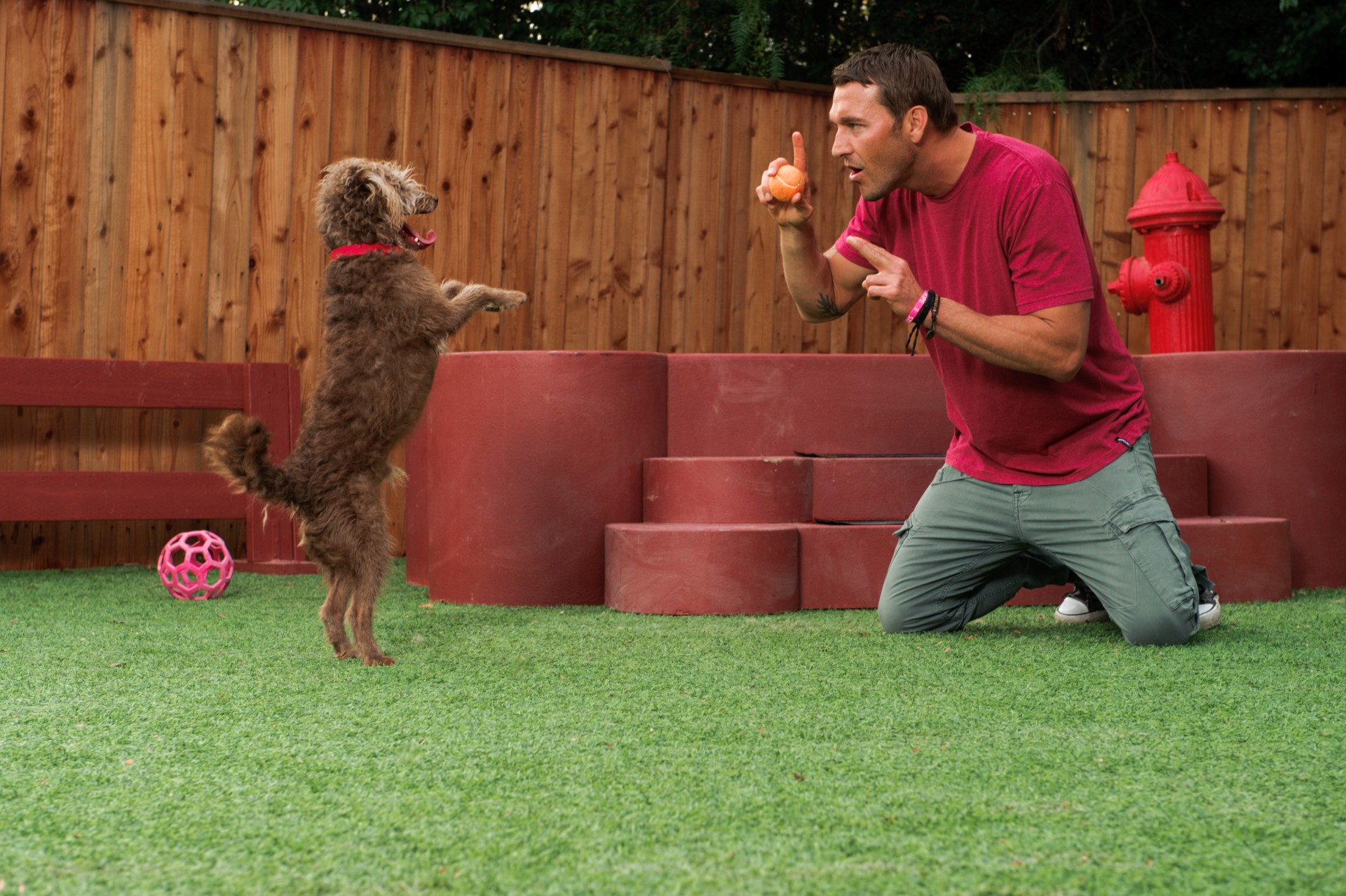
03 Jun How To Teach Your Dog To Walk On A Leash…
When people get a puppy one of the first things they should do is train them to walk on a leash. In the dog training world we call it “Leash Breaking.” It’s a must for all dogs but it can also be one of the more frustrating commands to train for the novice dog owner, especially for those who have a big, powerful, high energy dog. There are several methods I like to use when teaching this but today I’m gonna go over a very simple one that works on most dogs out there.
First thing’s first; lets arm ourselves with some really attractive treats. Every dog is different with what they like so this is completely subjective to the individual dog. When teaching this I like to make sure the dog is hungry. You don’t want them starving because they’ll be too difficult to work. You want them hungry enough where they’re motivated to work and still retain a steady focus. Now we have some treats we attach a regular 4 or 6 foot leash to them and let the fun begin…
Have a treat in your right hand while your dog is on the left. (You can swap sides if you like but traditionally dogs are walked on the left) The leash will be be in your left hand coiled up so the dog has just a little slack. Hold the treat in your right CLOSED hand about 6 inches from your dogs snout. Begin walking at a normal pace and say “Heel.” Now pay attention because here’s the trick…most dogs will naturally start jumping up and mouthing at the treat in your closed hand. This is completely normal and your goal is to keep your hand closed and wait them out till they stop this. Most dogs stop after 10 seconds. Some take longer. Whatever the case, wait them out and when they do stop this behavior they’ll be walking perfectly for a few seconds before they start the jumping/mouthing again. It’s key you praise and treat when they stop mouthing and are walking normal. It’s all about timing; it’s very simple and you only need a second or two to get the initial message across to them. Like most animals, dogs are trial and error creatures so they’ll quickly learn they get rewarded when they stop mouthing and walk at your speed. Do this over and over and what you’ll see is your dog will mouth less and less and walk more normal for longer periods of time. Your goal is to add a second or two every time during the training session.
Now we can’t have the dog rely on food to constantly do everything we want out of them so it’s time for the weening process. We use the food to teach the technique and instantly start weening them off the food once they’ve learned. This is vital because if not done you now have a dog that is completely dependent on food when asked to do anything. Here’s how I do this: I start by doing the same exact motion with the closed hand but now I only have a treat in my hand 8 of 10 times. The 2 times I don’t have a treat I heavily praise the dog and let them know what a good job they did. I always make sure that the final time in the session is paid with a treat. I DO NOT want to end a session without giving a treat. This leaves a lasting impression on the dog and you’ll see a lack of motivation the next time you work them. Your goal is to slowly use less treats over the course of a week till you eliminate them completely. Every day eliminate 1 more treat, always ending it with a treat. This will keep the dog constantly guessing when the treat is coming. Furthermore throughout the week your treat/reward hand should move to a slightly more normal position everyday. We started with it about 6 inches from your dogs snout and now we’re slowly walking with it in a much more natural position but keeping in mind that hand is the signal hand so if the dog needs a little motivation by all means use that hand to get them back in gear.
Ok I know everyone has the usual questions here. What happens when my dog “Puts The Brakes On?” What if my dog is pulling too much? Well the answer is in the first paragraph. Make sure they’re hungry! This is key to any training. Food is money to an animal. Much like you wouldn’t work for free, dogs won’t either. If they’re hungry enough and you have a treat they really want they’re going to stay right at your side to try and get it. And be sure not to ween them off the food too quickly. Training is a marathon, not a sprint. Much like us dogs learn at the speed of life. Teach them too quickly and they’ll be good at it. Teach them slowly and they’ll be great at it. Try it out for yourself and let me know how it goes. Ruff.
– Brandon



Brandi
Posted at 13:52h, 04 Junethank you. Very helpful.
Davena Neier
Posted at 15:57h, 04 JuneThanks you! I really appreciate your step by step instuctions. Specifically, the weening process you use is working for us.
Gerry
Posted at 13:27h, 10 Marchmaciefngint points altogether, you simply gained a new reader. What would you suggest about your post that you made a few days ago? Any positive?
Linda
Posted at 17:13h, 14 JuneDoes this work on older dogs? – dog walks perfectly until she sees another dog then she goes ballistics wanting to play (typical Labrador). I’ve tried several things and we just can’t take her anywhere because you never know when another dog will appear.
kathy
Posted at 18:37h, 18 JanuaryThank you for saying “Much like you wouldn’t work for free, dogs won’t either” . Many people think we bribe our dogs with treats. Well don’t our bosses bribe us with a paycheck.
kathy
Posted at 01:34h, 22 AprilBrandon, I love your technique but I think I’ve mixed a few things here. I just adopted a ten pound mini poodle and she isn’t house-trained. And she doesn’t like my yard so I took her for walks. I did the “Get Busy” and when she peed/pooped I praised and treated. Now when we walk she seems to want to stop and pee a lot (no medical problem). She stops dead in her tracks and then pees (even tiny bit or none) but then looks up for the treat. The mix up is I don’t want to drag her down the street but she seems to think a walk is time for treats and so stops to “pee”. How do I combine both – walking, not stopping every blade of grass, keep her walking, not dragging. Anybody else have this problem – Dog training owner to stop at the dog’s will. I’ve never had this problem before.
Liz
Posted at 01:02h, 23 AprilMy dog is small. If he only comes to my knee, how can I hold the treat in front of his nose and walk? I’ve seen you use the lure stick but I can’t find those around here. Any ideas of what I could improvise with?
Lynn
Posted at 17:21h, 18 AugustLove the instruction.
At my age it is a challenge to bend down to get in front of my small dog. With that constrain, how should I proceed?
Sam Bracken
Posted at 19:40h, 02 SeptemberBrandon. Your step by step instructions are excellent. If you had a book called lucky dog seven basic commands id buy it today.
My questions: Is there a good order to teach these commands so they build on success? How many commands do you typically work on per day? (I know you read the dogs energy but just on average) When moving onto new commands how often do you have to go back and refresh the basics so they stick?
I want to be able to take back control of my house. I have rescued 6 dogs for me and my family the past 4 years but haven’t done formal training until now. All the dogs are happy but they are in control. 4 live with me including our newest lab mix puppy. He is learning fast but my other dogs aren’t. My main problem is zoe a maltipoo who is used to being the center of attention. If I can get her trained then maybe when i get home from work they wont all go nuts when she barks constantly for attention. My wife is home all day and they behave calmly until I walk in. She blames me and I know that with proper training these dogs will be able to remain calm when I get home because they know I will give them attention at the appropriate time. I want to train myself to be better for them so we all can have a wonderful life. Please put together a companion book for you show and the basic commands.
Rosemarie
Posted at 03:19h, 19 FebruaryI’d say go around to local pet shops and give them some bnsuies cards and offer to pass around some of theirs to do a cross-marketing promotion. It’s always best if you can get a website and then google ads are amazing. If your trying to keep a low budget then hook up with the local pet shops, and pet taxi’s.
rK
Posted at 15:08h, 07 MarchWhat collar do you recommend for this training on a small to med dog?
Pam guest
Posted at 13:39h, 09 OctoberWhat kind of collar is used on Lucky Dog?
Dave Thompson
Posted at 15:11h, 12 NovemberWe just got a new puppy in my house and we are trying to teach him the basics like walking on a leash. I’ll have to try giving him a treat as a reward like you suggest when he does something good. HE really seems to like treats so I think that has a great chance at working for us.
Roxanne Hugley
Posted at 19:20h, 06 OctoberOur rescue dog we just got (beagle-spaniel mix) is not a “foodie.” Treats just don’t interest her, surprisingly. Any hints on what to use as a motivation tool in this case? Thank you so much.
Linda Lopez
Posted at 00:02h, 07 OctoberOur brittany spaniel pulls and I saw a leash on your show that went lightly around their muzzle to prevent that. Where might I find that type of leash.?
Angela
Posted at 15:13h, 12 OctoberYou cannot ignore the significance of dog walking if you want to keep your dog fit and active always, so it will be equally necessary to get a perfect insurance cover for dog walkers.
Myharlie
Posted at 17:13h, 16 OctoberHow does use of a prong collar compare to choke/dragging an abused dog?
Holly
Posted at 17:28h, 10 NovemberWhat treats do you use to train your dogs? My Shih Tzu at times will throw up if she receives too many treats while training. So don’t know what or how much to use while training. Buying your lur stick from amazon since petco or pets smart doesn’t carry it.
Angela
Posted at 20:06h, 13 NovemberBrandon, I love your practical guidance to dog training. I bought your book and have watched your show “Lucky Dog” and your YouTube videos.
Similar to Linda’s comment, I’d love to learn some additional guidance for teaching my dog to remain calm while walking on-leash when we pass other dogs on the sidewalk. We recently adopted a dog who is otherwise pretty well-behaved and well-trained by his previous owners, but we’ve discovered that he’s very reactive when another dog walks by. It seems aggressive/defensive rather than friendly/excited — straining at the leash and growling. We live in an urban neighborhood with lots of dogs, and avoiding them can be difficult. I’d like to be able to walk him in public without fearing what he’ll do in reaction to other dogs or constantly having to cross to the other side of the street to prevent an unpleasant situation. Thanks for any additional advice you can share!
Donna Gillespie
Posted at 15:11h, 13 DecemberWhat do you consider health training treats?
Louie
Posted at 22:09h, 13 JuneGreat article. I am experiencing some of these issues as well..